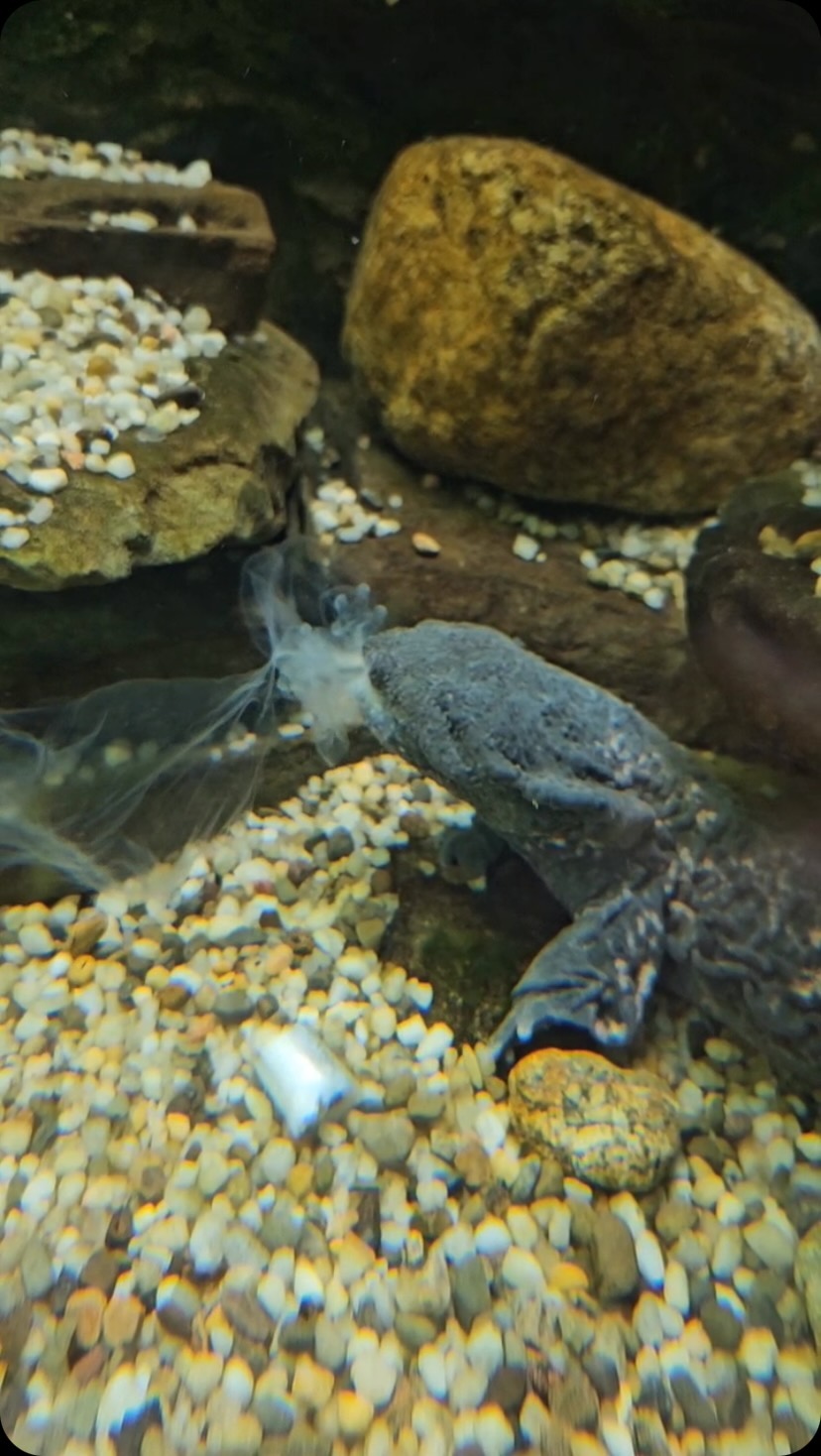- Introduction to Hellbenders and their unique biology
- The process and significance of Hellbenders eating their sheds
- Nutritional benefits of shed consumption
- Conservation efforts and the importance of habitat preservation
- How understanding Hellbenders’ behavior can aid in their conservation
Hellbenders are a special kind of amphibian, belonging to the genus Cryptobranchus. These large salamanders inhabit clean, fast-flowing rivers and streams in the eastern and central United States. Known for their unique biological and ecological traits, Hellbenders stand out as fascinating creatures within the world of zoology. Their recycling habits, specifically eating their own shed skin, play a crucial role in their growth and resource conservation.
Hellbenders shed their outer skin layers regularly, much like other reptiles and amphibians. Unlike many other creatures, Hellbenders consume their shed skin. This process isn’t merely about recycling material; it serves multiple significant purposes beneficial to their survival. First and foremost, the shed skin contains valuable nutrients that Hellbenders can metabolize, facilitating growth and conserving energy. By ingesting their old skin, they replenish vital proteins and minerals that might otherwise be lost. This practice is a smart adaptation, allowing them to thrive in their aquatic environments.
The benefits of consuming shed skin go beyond just nutrient absorption. By eating the sheds, Hellbenders can avoid leaving traces that might attract predators. In their natural habitat, it’s vital to minimize signals that could lead predators to their location. Moreover, consuming the shed skin reduces biological waste in their environment. This act of "recycling" contributes to maintaining the cleanliness of their freshwater habitats, which is essential for their respiration and overall health. Hellbenders rely on the quality of their aquatic environments, as their permeable skin is sensitive to pollutants and changes in water quality.
From a nutritional standpoint, consuming their shed skin is essential for Hellbenders. Shed skins are rich in keratin, proteins, and other nutrients that are crucial for bodily functions. The ability to recycle these nutrients saves them from the constant need to hunt for additional food, thus conserving the ecosystem’s resources. In their streamlined bodies, every nutrient counts toward energy conservation and efficient growth, making their recycling behavior an evolutionary advantage.
Conservationists and researchers focus heavily on the preservation of Hellbender habitats. Efforts to conserve these creatures are two-fold: protecting the rivers and streams they call home and understanding their natural behaviors. Clean water is paramount for Hellbenders, as it affects their development and reproduction. Efforts to maintain and improve water quality in Hellbender habitats are crucial. Pollution, habitat destruction, and climate change pose significant threats to their survival.
Public awareness and education campaigns are integral to Hellbender conservation. By highlighting the unique behaviors of these amphibians, such as their nutrient-recycling habit, conservationists can garner public interest and support for preserving their habitats. Schools, zoos, and wildlife organizations play a vital role in educating the public about Hellbenders and the ecological importance of amphibians.
Understanding Hellbenders’ behavior, like consuming their shed skin, can also provide insights into their overall health and the health of their ecosystems. Researchers can use this behavior as a bioindicator to monitor the environmental conditions of freshwater systems. Healthy Hellbenders and consistent shed consumption behaviors can indicate well-maintained habitats, whereas deviations might signal potential ecological problems.
In conclusion, the Hellbender’s recycling habit of eating its shed skin is a remarkable adaptation that benefits its growth, conserves resources, and supports its survival. Conservation efforts must prioritize pristine aquatic environments if we are to protect this special amphibian. By continuing to study Hellbenders and raise awareness of their behaviors and needs, we can help ensure their survival and the health of our freshwater ecosystems.
*****
Source Description
Did you know that Hellbenders recycle too? ♻️
They eat their sheds because they have nutrients that the hellbender can metabolize! This can help them grow and save other resources.
class=”instagram-media” data-instgrm-permalink=”https://www.instagram.com/reel/C-XiiNBOmnR/” data-instgrm-version=”14″ style=” background: border:0; border-radius:3px; box-shadow:0 0 1px 0 rgba(0,0,0,0.5),0 1px 10px 0 rgba(0,0,0,0.15); margin: 1px; max-width:540px; min-width:326px; padding:0; width:99.375%; width:-webkit-calc(100% – 2px); width:calc(100% – 2px);”>


